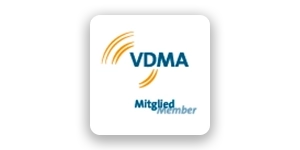Marketing
Content Marketing: Make Your Company Number One

Content
Content Marketing is King!
The name of the game is Content Marketing: it’s been all the rage for the past few years, yet how many people out there truly have a good grasp of the principle behind this type of Online Marketing? What even is Content Marketing? What kind of companies can profit from putting it to good use? What expertise is required and what tools can support you in realizing it?
If you hesitate to give an answer to these questions straight away, you should most definitely keep on reading. In this blogpost, we’ll provide you with a comprehensive overview of the topic of Content Marketing and demonstrate to you how to implement this principle efficiently in your company. Before we drill deeper into the topic, however, let’s first clear up the core concepts in play.
What is content?
In general, content refers to various types and formats of arranged data, such as text, image, audio, or video. In Marketing, content is usually distributed for free and categorized into the following content formats…
- Text-based Content: whitepapers, online PR, blog entries, articles for online and offline magazines, guest contributions, e-books, reading recommendations, interviews
- Audiovisual Content: videos, online sessions, workshops, social media livestreams, explanatory videos, image videos
- Audio Content: podcasts, social audio
- Images: photos, info graphs, slideshows
- Application Content: product demos, price calculators, product configurators
- Social Media Content: social media posts, how-tos, tutorials, guides, stories
💡 Tip: You can create variants of the same content and present it in different formats in a sustainable manner with Content Marketing. Think carefully about where your customers are the most active – be it social media, blogs, or online marketplaces.
What is Content Marketing?
Content Marketing defines the strategic planning, creation, and distribution of content, tailor-made for a target-group-oriented approach with the aim to convert the defined audience into new customers. To this end, the focus doesn’t lie on the marketed product but, much rather, on the users and their use cases.
Content Marketing is an efficient option for convincing new customers and strengthening your already established customer retention rate. When it comes to implementing Content Marketing successfully, your branch doesn’t matter – be it industrial corporation or SME manufacturer, everybody can inspire their customers with the right content. What’s more important is that the content is fine-tuned to fit your customers and is always relevant. To this extent, this form of Marketing stands in direct opposition to classic advertisement.
Pushing or Pulling? Push-Marketing versus Pull-Marketing
Classic advertisement is usually based on the push principle. For example, a well-placed ad banner calls attention to the offered product or service. The disadvantage of Push Marketing: classic advertisement continues to lose influence and ground. Users have long gotten used to the flood of ad banners to which they are exposed day in day out – more and more users ignore or block it entirely.
In contrast to this, Pull Marketing presents itself as an alternative. Here, the interaction is actively sought by the user. They do their research and look for relevant content and information on their own. For companies, everything now revolves around meeting the customer on their own ground with target-group-oriented content and offering just the right solution in the form of their products or services.
This is the great advantage of Content Marketing: it delivers precisely the information which the customers are searching for and provide added value on top of that. With smart storytelling and a well-thought-out Content Marketing strategy, you have a sustainable way of shifting the customer’s focus of attention away from the competition to your product as the right solution.
The Focus is on Your Target Group
Before you go about investing your brainpower into coming up with a suitable strategy or fitting content, you should first ask yourself the following question: “Who is my customer?” Only if you have a – clear and distinct – answer to this question will you be able to convince and inspire your users with relevant content. The more well-defined your target groups are and the more knowledge you have of them, you’ll be able to approach them more naturally.
One method which can help you in getting a clear-cut concept of your target group is working on a buyer persona. A persona is an idealized customer who will represent your entire target group. In our free whitepaper, “From Buyer Persona to Customer Journey,” we let you in on how to create a persona, what tools can help you in doing so, and what methods are most effective when it comes to inspiring customers.
Storytelling: Customers Love Stories
After figuring out who your customers really are and what content and topics are relevant to them, you can think about the “how” of presenting your content. The keyword is: storytelling. Content must be presented in an intuitive, exciting, and memorable manner for it to fully unfold its effect. In its bare bones, it’s about delivering a narrative to consumers. After all, it’s easier for our brain to process and recall information when presented in the form of a well-structured story. Storytelling is not about delivering novel-like content. Much rather, you should give your content a structure, a relevant topic, and a guiding idea. The goal is to create an image in the consumer’s mind about how your brand or your product can be useful and valuable. Be it the category of fashion, food, music, or cars, your company is there to be remembered. And stories contribute to this in a long-term manner.
Content Marketing Throughout the Customer Journey
The question with which you see yourself confronted right now is: Where do you approach your customer and what content is meaningful? Content Marketing aims at meeting your customer at every touchpoint throughout her Customer Journey on their own ground with tailor-made content. Such touchpoints can be explained using a model from the field of Marketing: AIDA.
1. Attention
In the Attention Phase, users will become aware of your offer or product. This phase is rather unspecific since the user won’t think about making a purchasing decision just yet. The optimal content for this phase is informative, comprehensive, and covers the broadest possible scope.
2. Interest
In the second phase, potential customers conduct research and collect facts. To this end, content is to be provided which is in-depth and detailed.
3. Desire
Once the customer thinks she has gathered sufficient information, she commits to the decision-making phase. Here, she’ll be looking for the right company and provider, which is why supplying subsequent information and a concrete problem solution is an absolute necessity. The dialog with the customer now occupies center stage.
4. Action
In this final phase, the conversion of leads into customers takes place. Offer all import details about your service post purchase, together with further references and offers.
4 Points You Must Look Out for when Doing Content Marketing
1. Content Marketing is a process, not a one-time commitment
Things keep on developing and should be constantly re-adjusted to fit your target groups acquired tastes.
2. Content Marketing requires strategy
Successful Content Marketing entails a concrete marketing strategy. This helps you when it comes to creating the planned content and is the first thing which you should work on in order to realize any of your Content Marketing activities in a targeted and systematic manner. Any Content Marketing strategy pursues three foundational goals:
- How do I position myself as a brand?
- How do I win customers?
- How do I retain customers and make them come around again?
3. Content Marketing represents your company and your brand
Content Marketing serves the purpose of presenting both, your company and brand, in the best possible light. Furthermore, Content Marketing is an integral part of your overarching communication strategy about how your company reaches out to people. Make sure that your Content Marketing strategy smoothly synergizes with the other components of your entire communication strategy before starting content production.
4. Content Marketing is based around the Customer Journey
Content should always be centered around the customer’s needs. To this end, as we’ve already established, you’re required to know your target group like the back of your hand.
Content is King! And it will Stay that Way
Since companies want to position themselves sustainably and sell products to their target groups, Content Marketing is – and will continue to be – an indispensable tool. Especially when it comes to Online Marketing and SEO, it’s the content that matters. After all, the content is what is processed and rated by search engines such as Google and co.
The criterion for good content is whether or not it can provide added value and concrete solutions to the consumer. With strategic storytelling, customers always get the relevant content they’re looking for at the right touchpoint. You solve the challenges you are confronted with and, at the same time, convince with your brand, product, and company.
To make sure that your combo of product strategy and Content Marketing will be crowned with success, it’s essential to know your customer and respond to individual needs at the suitable touchpoint. At first glance, this looks like a mammoth task. But don’t panic! With the right tools for automating both, your product data processes and content distribution, this will be nothing short of a cakewalk.
With a PIM system, you pool your product content in a central system, manage it independent of corporate teams and departments for all touchpoints, and export it into all touchpoints. Even if a PIM doesn’t take care of coming up with the Content Marketing strategy itself, it still contributes substantially to getting the relevant content to the right target group, while also guaranteeing for consistent data across the board.
Show, Don’t Tell?
Sure thing! Secure your exclusive demo tour now, without any commitments on your end. Our experts personally present to you the highlights of our PIM system in a 30-minute-long demo show.
From Our Blog
You may also be interested in the following articles







